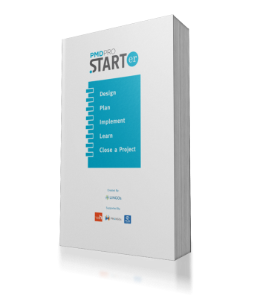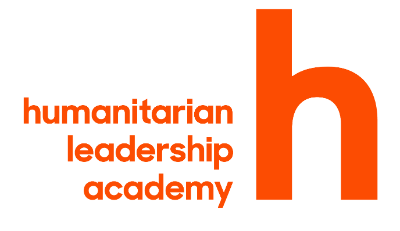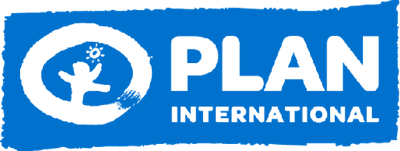The Project Model
Managing Projects
To achieve this, they all share one thing in common – managing projects!
A project is a product or service that needs to be completed within a fixed time frame. Projects can range hugely in size, from a small village level project to a large-scale emergency response. Despite differences in size and scope, well-run and successful projects all have one thing in common: a Project Manager who is responsible for the overall success of the project.
The Project Manager works with technical experts to write project proposals, and with partners and communities to develop project plans and implement activities. Project Managers recruit teams with the right skills, monitor progress, secure resources, and ask the right questions to ensure that projects are kept on track.
The PMD Pro approach is already used widely in our sector. Thousands of people are learning online and taking the low-cost exams in PMD Pro 1 and PMD Pro 2. The PMD Pro Starter serves both as an entry point for new project managers and as an overview for those with more experience. We have extracted the critical processes from the full Guide to Project Management to provide you with a tried and tested model and toolkit that will enable you to improve and deliver great work.
An Approach that Works!
Whether you are starting out as a manager, or need a quick and easy refresher – PMD Pro will help you set up your project in the best possible way. Don’t wait until you need to set up a new project. Just dive in, learn and start experiencing the PMD Pro approach! It can add value no matter what stage of a project you are at!
Find out about the phases that you will need to work through during the lifecycle of your project. You will learn how to move through each phase until your project is completed. We introduce six disciplines that will alert you to some of the constraints and tensions that will arise during your project. And we outline five principles that should be at the center of your project management approach.
Phases
PMD Pro provides a balanced and phased project model that covers the entire lifecycle of a project. You will learn how to work through each of the phases, making use of different tools in your toolkit, and also understand the benefits of repeating some of the phases as you plan and implement, in an iterative process that allows you adjust the scope of your program as necessary.
– Project identification and definition – you work with your project team and other stakeholders to analyze the project environment, explore options and develop ideas for the design of your project. The decisions that you make here set the strategic and operational framework within which your project will operate.
Try these out: Objective Trees, Problem Trees, Risk Register
– Project set up – you share your proposal for authorization, enabling you to define project parameters and communicate them with its main stakeholders. This is the point at which you agree where accountability for decision-making on issues related to your projects sits (its governance structure).
Try these out: Project Charter, RACI diagram
– Project planning – using documents that you have already developed, you and your team move onto developing a comprehensive and detailed Project Implementation Plan. This important document is revisited throughout the life of a project, and updated (if needed) to reflect the changing context of a project.
Try these out: Logical Framework, Work Breakdown Structure, Network Diagram, RACI diagram, Budget,
– Project implementation – now it’s time to put your Implementation Plan into practice. You manage this process, leading and motivating your team and ensuring that all of the different elements fit together. You are the person responsible for amending and adjusting the plan as contexts change – making sure that everyone is still focused on the overall goal.
Try these out: Gantt Chart, Issue Log
– Project Closure – closure of a project should never come as a surprise because the overall goal of a project is to end it successfully. You need to ensure that transition and closure activities happen smoothly, confirming deliverables with beneficiaries, collecting lessons learned, and completing admin, finance and contractual requirements.
Try these out: After Action Review, Project Closure Checklist
Disciplines
Note: disciplines have been embedded into the phases on the Project DPro second edition.
To succeed as a Project Manager, it is important to develop the disciplines and systematic approaches needed to keep on top of activities. These include:
– Scope Management – A well-defined project scope shows what needs to be done (your deliverables) and how you intend to get there. Do this well and everyone will share a common understanding of the benefits and the work required to successfully deliver project outcomes and outputs. It also helps to put boundaries around project deliverables in order to avoid scope creep (a principle cause of project delays).
Try these out: Work Breakdown Structure, Logframe
– Time Management – It’s important to produce accurate schedules so that you can deliver your project on time. This includes identifying all of the activities that need to happen, looking at how these activities are sequenced (or dependent on other factors); estimating the type and quantity of resources needed to perform each activity, and how long each of these activities will take. Your Project Schedule (Gantt Chart) pulls all of this information together and should be monitored regularly to ensure that the overall project calendar remains on track.
Try these out: Network Diagram, Gantt Chart
– Project Resource Management – You will need to organize all of the resources needed for your project, creating a budget so that funds are allocated where they are needed and your people are assigned to deliver the right tasks. You will also need to liaise with your organization’s support services – finance, supply and logistics, human resources – to ensure a smooth flow of the goods and resources that you will require.
Try these out: Budget
– Risk Management – When you first started thinking about your project, you will have had discussions about potential risks. As the project evolves, some risks will be resolved and others will surface. You need to recognize these, document them, and make decisions made about whether to avoid, transfer, reduce or accept a potential risk to the project.
Try these out: Risk Register
– Project Justification Management – To initiate a project, you need to make a solid case for its value to number of stakeholders – your donors, the community benefiting from project interventions – and ensure that there is a good fit with your own organization’s goals. As your project is implemented there are likely to be times when you will need to provide updates for various stakeholders.
Try these out: Problem Tree, Objective Tree
– Stakeholder Engagement – Your project will impact a range of individuals, groups and organizations and it is important to communicate with them effectively. Their may be times when you need to manage their expectations, or keep them updated through engagement plans at different phases of your project.
Principles
Underpinning the project management model (phases and disciplines) are five important principles that contribute to a project’s success. Remember these and your project will be set up to succeed!
Review principles (and phases with embedded disciplines' tools and concepts) in the Project DPro Guide.
Pulling it all together
A good grounding in PMD Pro’s model – with clear phases, comprehensive disciplines, and overarching principles – will enable you to manage some of the tensions and constraints that will arise during your project. Experienced project managers often describe this as being aware of the Project Constraint Triangle – its three sides referring to 1) the scope or quality of work, 2) the cost and resources needed, and 3) timeframe within which the project needs to be delivered.
There may be occasions when one side of the triangle is set and cannot change (e.g. the timeframe for a project) but the other two sides (scope and budget) allow for some flexibility and negotiation. As you develop as a project manager, you will understand the relationships and trade-offs that exist between each of the constraints. The more you start to think in this way, the easier it will be to set parameters early on in a project (and the authority to make adjustments during).
Additional Resources

Supported & Developed by:
Shared by:
Users are free to copy/redistribute and adapt/transform
for non-commercial purposes.
© 2022 All rights reserved.




